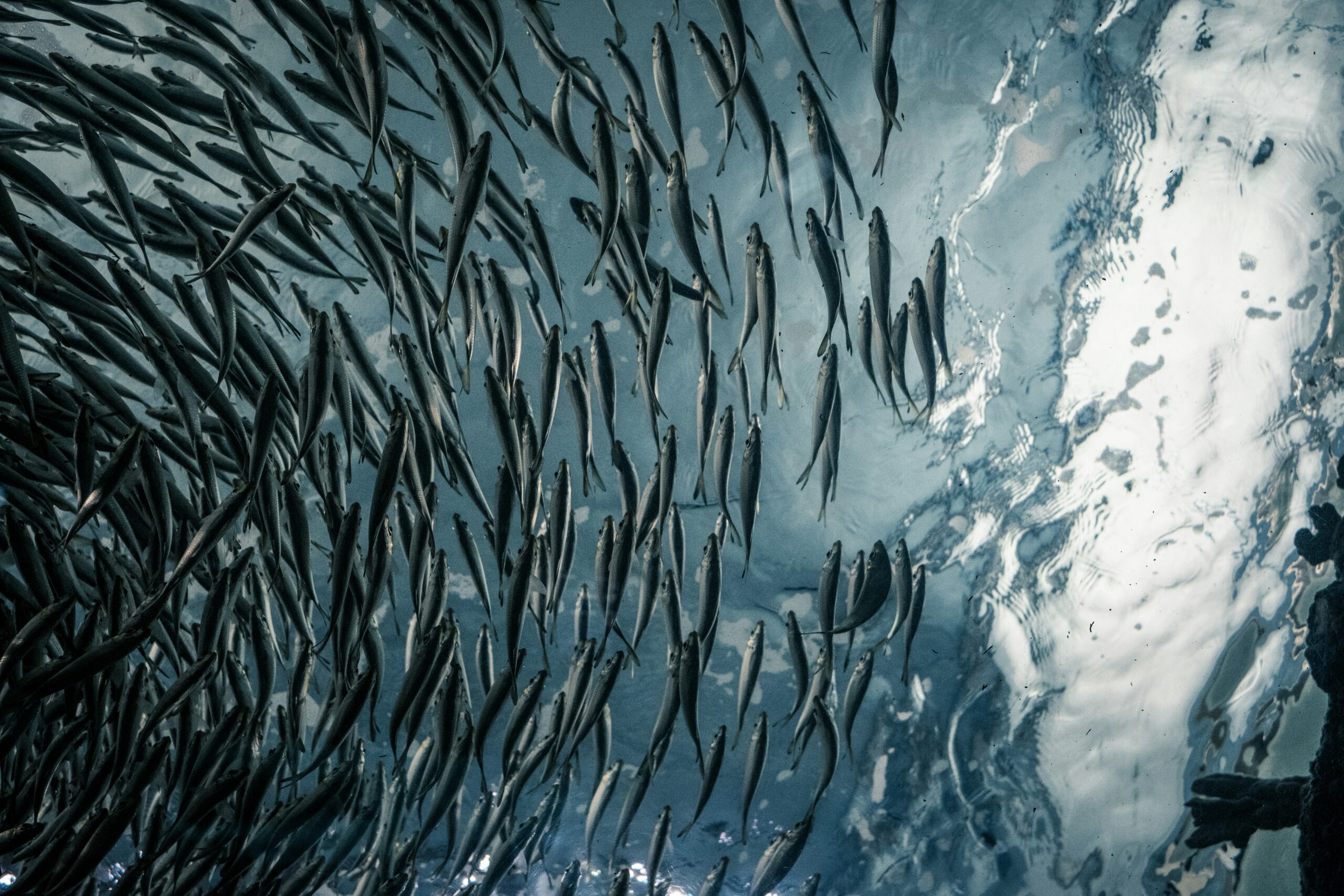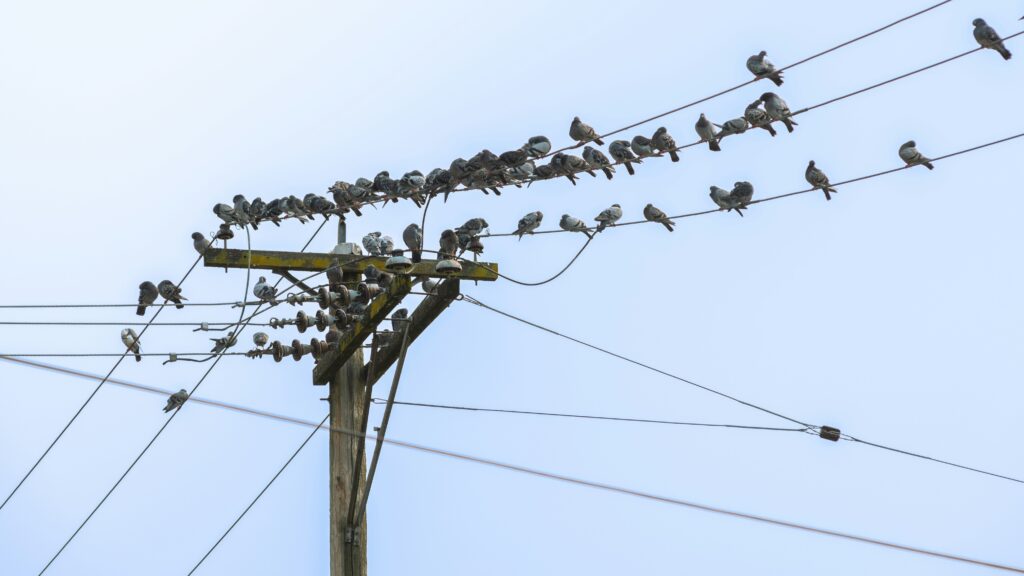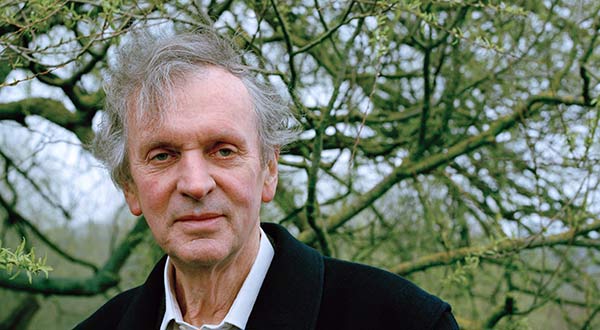by Rupert Sheldrake
The original article first appeared in: Sheldrake, R. (2019). Can morphic fields help explain telepathy and the sense of being stared at? Mindfield: The Bulletin of the Parapsychological Association, 11(1), 26-34.

by Rupert Sheldrake
The original article first appeared in: Sheldrake, R. (2019). Can morphic fields help explain telepathy and the sense of being stared at? Mindfield: The Bulletin of the Parapsychological Association, 11(1), 26-34.
Summary
The morphic field hypothesis proposes that minds are systems of fields that are located inside brains but also extend far beyond them, just as the fields of magnets are both within magnets and extend invisibly beyond them, and as the electromagnetic fields of mobile telephones are both within them and extend beyond them.
Minds are extended beyond brains in every act of perception, and the fields of visual perception link the looker to the object that is looked at. Hence something can be affected by looking at it. In animals, human and non-human, the sense of being stared, or scopesthesia, could well be a result of this process, mediated by perceptual fields, which are kinds of morphic fields.
In animals, human and non-human, the sense of being stared, or scopesthesia, could well be a result of this process, mediated by perceptual fields, which are kinds of morphic fields.
Morphic fields are fields within and around systems in which the whole is greater than the sum of the parts, including molecules, cells, organs, organisms, and societies of organisms. They contain an inherent memory, given by a process called morphic resonance, namely the influence of similar patterns of activity in self-organising systems on subsequent similar systems across time and space. This hypothesis predicts, for example, that each species has a kind of collective memory. If rats ran a new trick in London, for example rats all over the world should be able to learn the same trick quicker. There is already evidence that this happens (Sheldrake, 2009).
In the light of morphic fields, telepathy can be understood as an interaction between members of social groups within the morphic field of the group as a whole, which interconnects the individual animals (Sheldrake, 2013).
Morphic fields associated with specific intentions could perhaps help in understanding psychokinetic phenomena and remote viewing. But this hypothesis does not provide any immediate explanation for precognition or presentiment.
The Development of this Hypothesis
From the 1964 to 1974, I did research on developmental biology at Cambridge, and in particular on the development of plants. I also worked on plants growing under field conditions at an International Agricultural Research Institute in India from 1974 to 1985. But neither my own work nor other research in developmental biology gave an adequate explanation of the development of form. Chemical signals, gene activation, and other molecular processes seemed inadequate. Something more was needed and I was drawn to the long established concept of morphogenetic fields, or form-shaping fields, first proposed in the 1920s. These fields shape the form of developing cells, tissues, organs and organisms. They are within and around the system they are shaping.
Although this concept is widely used by developmental biologists, no one knows what morphogenetic fields are. Most researchers treat them as a descriptive convenience, placeholders for fully mechanistic explanations that have not yet been discovered. I find it more fruitful to think of them as real fields, of a similar degree of reality to magnetic fields, with their own particular properties. These include memories from previous systems that shape the fields themselves. This memory is given by morphic resonance, a connection from past to present systems across space and time on the basis of similarity (Sheldrake, 2009). These fields work by drawing developing systems towards attractors, as described mathematically by the French mathematician René Thom (Thom, 1975).
This hypothesis has many implications for the understanding of biological processes like protein folding, inheritance, collective memory, learning, and memory itself, which on this hypothesis depends on morphic resonance rather than on material traces stored within brains (Sheldrake, 2012).
This hypothesis has many implications for the understanding of biological processes like protein folding, inheritance, collective memory, learning, and memory itself, which on this hypothesis depends on morphic resonance rather than on material traces stored within brains.
My interest in psi phenomena arose in the 1980s when I realised that this hypothesis implies that scopesthesia and telepathy should be widespread in the animal kingdom. They are biological phenomena, natural, not supernatural, normal, not paranormal, and probably common to many animal species.
Premises and Postulates
The basic postulates of the hypothesis of formative causation, the overall name for the hypothesis of morphic fields and morphic resonance, are as follows:

This hypothesis leaves open the question of how morphic resonance actually works. There are several suggestions. One is that the transfer of information occurs through the “implicate order”, as proposed by the quantum physicist David Bohm (Sheldrake 2009, Appendix B). The implicate or enfolded order gives rise to the world we can observe, the explicate order, in which things are located in space and time. In the implicate order, according to Bohm, “everything is enfolded into everything” (Bohm, 1980).
Or resonance may pass through the quantum vacuum field, also known as the zero-point energy field, which mediates all quantum and electromagnetic processes (Laszlo, 2007).
Or similar systems might be connected through hidden extra dimensions, of which there are five in string theory and six in M-theory (Carr, 2008). Or maybe morphic resonance depends on new kinds of physics as yet unthought-of.
As applied to the sense of being stared at, or scopesthesia, this morphic field hypothesis implies that the effects on the subject being stared at depend more on the focusing of attention and intention than on distance. For example this sense may work just as well over a distance of hundreds of feet as over a few feet, if the process of watching is aided by telescopic lenses. It may also work through indirect means, as in television or closed circuit television, although more weakly than through direct vision, which establishes a more direct connection (Sheldrake, 2013).
In relation to telepathy, this hypothesis suggests that telepathy will occur primarily between bonded members of social groups rather than between strangers (Sheldrake, 2013).
The sense of being stared at and telepathy are natural consequences of the hypothesis of morphic fields. Although this hypothesis could perhaps account for clairvoyance psychokinesis, and precognition, it only does so through chains of additional hypotheses, whereas possible explanations for the sense of being stared at and telepathy emerge naturally and directly from this hypothesis.
Applications of the Morphic Field Hypothesis
This hypothesis predicts that animals might be able to detect through their own perceptual fields when the perceptual fields of other animals are brought to bear upon them, even if they cannot see, hear or smell the animal watching them. This field sensitivity may not be consciously perceived and may be part of a background unconscious awareness.
In the course of evolution, a greater awareness of being observed may have been of adaptive value, especially to a prey animal sensing when is being watched by a potential predator. This ability could have become widespread within the animal kingdom. It would also be expected to be widespread among human beings, and indeed surveys show that over 90% of the population, including children, even in industrial countries, have had the experience of being watched from behind, or of watching other people who then turn around. There is now good empirical evidence that people can indeed tell, at levels very significantly above chance, when they are being stared at from behind. This ability can also be detected through CCTV through physiological changes in galvanic skin response, which are unconscious (Sheldrake, 2005).
The morphic field approach to telepathy predicts that it is widespread among animals, and may enable members of social groups to communicate at a distance.
The morphic field approach to telepathy predicts that it is widespread among animals, and may enable members of social groups to communicate at a distance. Animals that bond with humans, such as pet dogs, cats and parrots, will pick up their owners’ intentions telepathically, including their intentions to return home. There is now good evidence that dogs know when their owners are coming home even when they are miles away, when they return at randomly selected times, and travel in unfamiliar vehicles. They seem to detect their owners’ intentions telepathically. This hypothesis also predicts that these effects will occur only between animals and people with whom they are strongly bonded, in agreement with the facts (Sheldrake, 2011).
The same principles apply to humans. Telepathy would be expected to occur most effectively between people who are strongly bonded emotionally, like mothers and babies, twins, parents and children, lovers, spouses, and best friends. This indeed seems to be the case, both in spontaneous cases of telepathy and in experimental investigations (Sheldrake, 2013).
Other Evidence
There is now much evidence for the sense of being stared at and for telepathy in animals and people, as summarised in my books Dogs That Know When Their Owners Are Coming Home, And Other Unexplained Powers Of Animals (second edition, 2011) and The Sense Of Being Stared At, And Other Unexplained Powers Of Human Minds (second edition, 2013).
The Application of this Hypothesis in Other Domains
The hypothesis of morphic fields was primarily developed in relation to chemistry, biology, psychology and social organization. It is primarily about “normal” non-psi phenomena.
Another application of this hypothesis is a new approach to animal navigation. As I discuss in my book Seven Experiments That Could Change The World (Sheldrake, 2002) the question of how animals navigate remains largely unsolved. The most detailed experiments are on homing pigeons. Pigeons can find their home from hundreds of miles away from unfamiliar places. Racing pigeons can return from 600 miles away in about 10 hours, an average speed of 60 mph. They do not search at random; they know where to go. Attempts to explain this phenomenon in terms of a sun compass, memorising the outward journey, inertial navigation, and the sense of smell have all failed. Some researchers speculate that a magnetic sense could explain navigation, and some migrating animals do indeed seem able to detect the earth’s magnetic field.
But although a compass sense may help an animal stay on course, it cannot possibly explain navigation itself. Imagine that you are parachuted into an unknown place and given a compass. You would immediately know where North was, but this would not tell you where home was. A compass sense could help you if you knew where home was by some other means, but would not help if you did not have a map or some other source of directional information.

My own hypothesis is that pigeons are linked to their homes by morphic fields, built up through familiarity with their home and surrounding area. When taken away from home they remain connected with it through these fields, which give a sense of direction. A crude mechanical analogy is to think of the pigeons as joined to their home by a kind of invisible elastic band. Through this field connection, they feel a pull towards their destination. Attempts to explain navigation without this sense might illuminate some details of the animals’ sensory processes, but cannot explain the sense of direction itself.
Thus morphic fields might help to solve the mystery of animal navigation. One way of testing this hypothesis is to use a mobile pigeon loft, in which the home is moved from the pigeons rather than the pigeons from the home. I have conducted several experiments with mobile pigeon lofts that have yielded very promising results. In the most recent test, a pigeon loft was mounted on a ship belonging to the Royal Dutch Navy, and moved 6,000 miles from Holland to the Caribbean and back again. Pigeons were able to find their home on the moving ship from substantial distances, in one case from 300 miles away over the Atlantic Ocean (Sheldrake, 2002, Appendix).
Further Research Possibilities
Differences from Other Models of Psi
Several models of psi start from physics, in particular quantum physics, whereas the morphic field model starts from a holistic approach to nature which does not seek to explain everything in terms of smaller systems, and ultimately in terms of the smallest of all systems, namely quantum processes. The morphic field approach also differs radically from the Generalized Quantum Theory model, which is based on non-local correlations rather than causal connections (Walach et al., 2014). The sense of being stared at arises as a response to being stared at: staring is a cause, and detecting it is an effect. Likewise telepathy is causal: a distressed baby causes its mother’s telepathic response.
The sense of being stared at arises as a response to being stared at: staring is a cause, and detecting it is an effect. Likewise telepathy is causal: a distressed baby causes its mother’s telepathic response.
Nevertheless, the approach to telepathy in terms of morphic fields is similar to Dean Radin’s hypothesis of entangled minds, taking quantum entanglement or non-locality as a model that can be applied at systems at much higher levels of complexity (Radin, 2006). In common with the entangled minds model, the morphic field hypothesis predicts that organisms that have been part of the same social system from the past, part of a bonded group, will remain connected at a distance. This hypothesis also predicts that the connections will not fall off with distance, in agreement with many observations on telepathy.
The morphic field hypothesis also differs from “one mind” approaches that treat psi phenomena as aspects of an ultimately unifying mind underlying all things (Dossey, 2014). The morphic field approach does not necessarily depend on a kind of ultimate mind at a higher level, but rather on fields of connection between animals and what they are watching, and also connections between members of social groups.
This hypothesis also differs from physics-based approaches designed to account for precognition and presentiment in terms of causal influences “backwards” in time. The morphic field hypothesis has little to say about precognition and presentiment. Morphic fields may be complementary to time-reversal hypotheses.
The morphic field model differs from James Carpenter’s “first sight” model of psi in its emphasis. The first sight model deals with unconscious mental processing that is scanning inputs, including psi inputs, which are at first preconscious (Carpenter, 2012). It is a psychological model rather than a model of the extended mind or of social fields. But these two approaches seem compatible. Morphic fields and the extended mind would influence first sight.
Further Reading
My book A New Science of Life (third edition 2009, called Morphic Resonance in the US) outlines the hypothesis of formative causation through morphic fields and morphic resonance, reviews evidence from 25 years of research, and proposes ten new tests for morphic resonance. The fullest statement of the hypothesis of formative causation and its application to collective memory, individual memory and cultural inheritance is in my book The Presence of The Past: Morphic Resonance and the Habits of Nature (second edition, 2012).
Research on telepathy in animals, as well as animal premonitions and the sense of direction is summarised in my book Dogs That Know When Their Owners Are Coming Home, And Other Unexplained Powers of Animals (second edition, 2011).
The extended mind hypothesis and a discussion of human telepathy is summarised in my book The Sense Of Being Stared At And Other Unexplained Aspects Of Human Minds (second edition, 2013).
The empirical evidence for scopesthesia and its theoretical implications were the subject of a special issue of the Journal of Consciousness Studies (Vol. 12, No.6, 2005) in which I wrote two target articles and a response to 14 other articles and comments by other researchers, including skeptics.
I have also published many experimental papers on the sense of being stared at and on animal and human telepathy and which are all available online through my website:
Papers on stare detection: https://www.sheldrake.org/research/sense-of-being-stared-at
Papers on telepathy in non-human animals: https://www.sheldrake.org/research/animal-powers
Papers on telepathy in humans: https://www.sheldrake.org/research/telepathy
Acknowledgements
I am grateful to the Watson Family Foundation and the Institute of Noetic Sciences, Petaluma, CA, and to the Planet Heritage Foundation and the Gaia Foundation, London, for financial support.

Bohm, D. (1980), Wholeness and the Implicate Order. Routledge and Kegan Paul, London, p. 177.
Carpenter, J. (2012) First Sight: ESP and Parapsychology in Everyday Life. Rowman & Littlefield, Lanham, MD.
Carr, B. (2008) Worlds apart? Can psychical research bridge the gap between matter and minds? Proceedings of the Society for Psychical Research 59, 1-96.
Dossey, L. (2014) One Mind: How Our Individual Mind Is Part of a Greater Consciousness and Why It Matters. Hay House Reprint, Carlsbad, CA.
Laszlo, E. (2007) Science and the Akashic Field: An Integral Theory of Everything. Inner Traditions, Rochester, VT.
Radin, D. (2006) Entangled Minds: Extrasensory Experiences in a Quantum Reality. Paraview Pocket Books, New York.
Sheldrake, R. (2002) Seven Experiments That Could Change the World: A Do-It-Yourself Guide to Revolutionary Science (2nd ed.) Park Street Press, Rochester, VT.
Sheldrake, R. (2005) The sense of being stared at. Part 1: Is it real or illusory? Journal of Consciousness Studies, 12, 10-31.
Sheldrake, R. (2009) A New Science of Life: The Hypothesis of Formative Causation (3rd ed.). Icon Books, London (Published in the US as Morphic Resonance. Park Street Press, Rochester, VT)
Sheldrake, R. (2011) Dogs That Know When Their Owners Are Coming Home, And Other Unexplained Powers of Animals (2nd ed.), Broadway Books, New York.
Sheldrake, R. (2012) The Presence of the Past: Morphic Resonance and the Habits of Nature (2nd ed.) Park Street Press, Rochester, VT.
Sheldrake, R. (2013) The Sense of Being Stared At, And Other Unexplained Powers of Human Minds (2nd ed.). Park Street Press, Rochester, VT.
Thom, R. (1975) Structural Stability and Morphogenesis. Benjamin, Reading, MA.
Walach, H., von Lucadou, W. and Römer, H. (2014). Parapsychological phenomena as examples of generalized nonlocal correlations—a theoretical framework. Journal of Scientific Exploration, 28, 605–631.

Welcome to Mindfield 17(2) on neurodivergence and communication. In their editorial, Jacob W. Glazier and Anastasia Wasko highlight the popularity of The Telepathy Tapes, connecting public interest and research in neurodivergence with extrasensory communication. They urge honoring the humanity of neurodivergent people while imagining a future that integrates psi into everyday life. They also present …
by Diane Hennacy with Jacob Glazier and Anastasia Wasko
by Julia Mossbridge, Maria Welch, and Jeff Tarrant